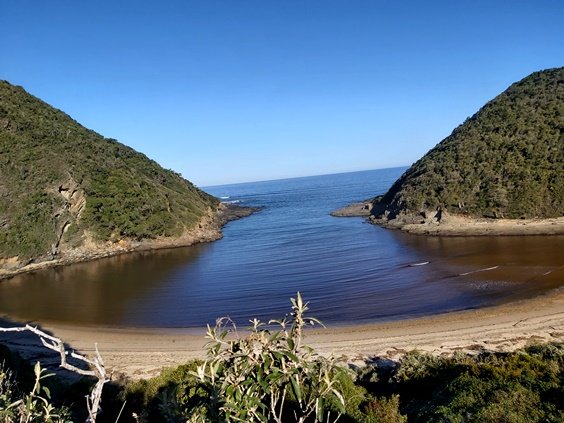Salt River estuary

Author: Ivan Lätti
Photographer: Thabo Maphisa
The Salt River reaching the sea to the west of Nature’s Valley cuts through a picturesque gorge covered by coastal forest, fynbos, dense scrub and rocky outcrops. A docile stream for much of the time, the occasional deluge in its upper reaches, the Tsitsikamma Mountains, turns the small river into an angry torrent for brief periods. Such flash floods may surprise and endanger hikers and animals in the kloof.
The cold, fast-flowing stream, mostly over a sandstone bed, is acidic, well oxygenated and retains limited sediment. The red-brown water is coloured by humic acid, relating it to the humus generated by the vegetation. This improves the soil structure as it stimulates microbial activity, a feature of the local natural ecology.
Freshwater fish species are absent but a diversity of small, aquatic animals and insects live and visit here. Their future depends on conservation practices, standards and decisions.
The salinity of the water of the estuary varies tidally and with sea currents in the vicinity over time, determining what marine or riverine animals will come or stay here. Salinity reduces up the river and as the amount of fresh water reaching the mouth differs with rainfall patterns and seasons. Estuary salinity also changes at different depths in the water and according to the gradient and shape of the floor of the estuary bed. The flow of the river changes over time, as well as with seasons, impacted upon at its mouth by the sea as well.
While the bush-covered hills around may appear stable, photos of the river mouth, sandbanks and beaches do show the changes... dramatically when bigger natural events impact upon the loose stuff, imperceptibly in the places stabilised by rock (Wikipedia).

